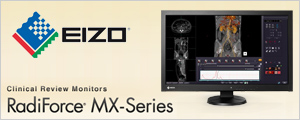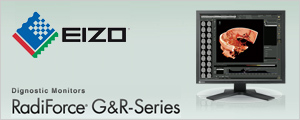
Eizo Medical Monitors with 5 years swap out guarantee
and on site demonstrations.
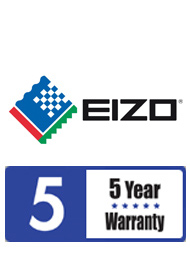 With the shift to completly filmless systems for improved efficiencies in patient care EIZO,
With the shift to completly filmless systems for improved efficiencies in patient care EIZO,
Will continue to provide products of surpassed quality, consistency, and value that are truly focused.
Eizo Monitors come with a full 5 Year Warrenty on Eizo Monitors.
Click Here to View the Eizo 5 Year Warrenty >>
We are a leading supplier of Eizo Monitors in the United Kingdom
We will help you specify the most appropriate monitor to suit your needs and budget.
Contact Us for for more information regarding Eizo Monitors using the form below.
For more Information or Purchasing of Eizo Monitors
View Our Full Eizo Monitor Product Range
- Eizo Diagnostic Monitors Click Here To view full product range…
- Eizo Clinical Review Monitors Click Here To view full product range…
- Eizo Digital Mammography Monitors To view full product range…
- Eizo Surgical Monitors Click Here To view full product range
Eizo Monitors Overview
RadiForce G&R-Series
Diagnostic Monitors
Exceptionally Accurate and Stable Image Display
Information Volume of Medical Images and Monitors
Information volume of the medical image differs depending on the modality which creates the image. When installing monitors in your hospital, it is important to consider the “information volume” of the medical images that the monitor needs to display. For example, a 1 megapixel monitor can display 4 slices of CT with an information volume of 512 × 512 pixels, a 2 megapixel monitor can display 6 slices, and a 3 megapixel monitor can display 12 slices without losing any of the information.

However, a chest CR which has an information volume of 1760 × 2150 pixels can only be displayed partially with a 1 or 2 megapixel monitor. Thus, in order to display the full image, the information must be stretched causing a thinning effect of the image. Using a 3 megapixel monitor, the image can be displayed fully without the information being thinned-out and a resulting loss in image quality.

RadiForce with the Selection of Optimum Diagnostic Monitors
It is important to select the monitor which suits the medical images. With RadiForce diagnostic monitors, you can select the optimum monitor which is suited for the information volume of the medical image you need to display.
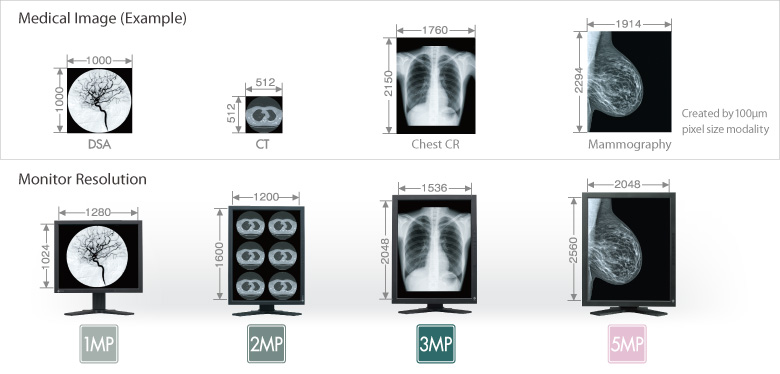
RadiForce MX-Series
Clinical Review Monitors
Superior Cost Performance Monitors ideal for Viewing Patient Charts with Medical Images
Display Differs Depending Upon Gray scale Tones
Standard monitors for general office use have grayscale tone characteristics which may vary even between the same models. In the medical field, monitors must display medical images accurately and consistently. Digital Imaging and Communications in Medicine (DICOM) Part 14 specifies a display function for grayscale which is now used as a standard to adjust the grayscale tone characteristics of monitors used in the medical field.

Cost-Efficiency Demanded Under Clinical Review Applications
Medical images can now be reviewed with clinical record applications. However, it is costly for hospitals to install high-performance, DICOM calibration compatible diagnostic monitors throughout the entire hospital, and a cost-efficient solution is demanded for clinical review application usage environment.

Calibration to the DICOM Part 14 Compliant and superior Cost Performance Monitor is Optimum for Clinical Review
With the bundled RadiCS LE quality control software installed, a built-in backlight sensor periodically checks for brightness irregularities of RadiForce MX-Series monitors. Furthermore, simplified calibration compliant with the DICOM Part 14 standard can be periodically performed to correct the brightness and grayscale tones of the monitor. Superior cost performance will be achieved when installing a large number of monitors compliant to DICOM Part 14 in clinical review application usage environments.

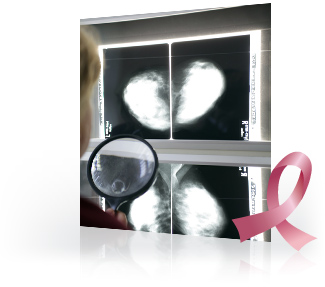
Radiforce Mammo-Series
Digital Mammography Monitors
Accurate and Consistent Quality Images for Mammography Diagnosis
For Early Detection Of Breast Cancer
As the incidence of breast cancer rises, regular mammograms are recommended for early detection. It is vital in the process of early breast cancer detection to find subtle masses and calcifications. Film imaging for mammography diagnosis has long been the primary methodology. However, to meet the demand for a higher quality of images and reduction of reading time and cost, digitizing and networking of medical images in a filmless environment is spreading rapidly.
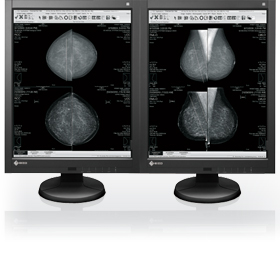
Film to Filmless Mammography Diagnosis
The transition from film to filmless mammography naturally requires a monitor to display extremely precise images equal to or better than film mammography. In the mammography field today high-performance monitors featuring high resolutions and displaying high density images contribute to the process of early breast cancer detection.
8 Requirements to Select the Optimum Digital Mammography Monitor

1. High-Resolution
High resolutions are required to display the correct “information volume” of a digital mammography image.
2. High-Definition & High Density
For the detection of mammary gland disorders which appear as “distortion,” the monitor needs this required performance in order to display the subtle structures.
3. Multi – Greyscale
For the detection of small tumors which appear as delicate “density” differences, the monitor needs the correct display of extremely subtle grayscale shadings.
4. Brightness Uniformity
For correct luminance display of delicate “density” differences, the monitor needs uniformity in brightness across the entire screen.
5. Image Sharpness
For detection of subtle masses and calcifications, the monitor needs to display the outlines of the images with a high degree of sharpness.
6. DICOM Part 14 Compliance
For unified image display between multiple monitors, the monitor’s tone characteristic is required to comply with the grayscale standard DICOM Part 14.
7. DICOM Part 14 Calibration
Since the quality characteristics gradually change over time, monitor that is calibration compliant with DICOM Part 14 is required.
8. Simple Quality Control Procedures
For the continuous quality maintenance and control, monitor enabling easy-to-follow QC procedures is required.
RadiForce L&E-Series
Surgical Monitor Solutions
Exceptionally Accurate and Swift Image Display In Operating Rooms
For the Interventional Radiology Room
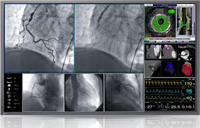
High-Quality Images Enhance Surgical Efficiency
During Interventional Radiology (IR), a wide range of medical information and images are required simultaneously, thus cutting-edge display quality makes a difference by bringing out the details the interventional radiologist needs at the time she needs them.
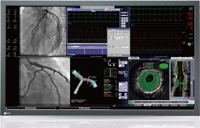
Focal Point on a Single Monitor
With its size and resolution, EIZO’s large-scale monitors for operating rooms can display images from multiple modalities simultaneously. This improves work efficiency while solving common issues encountered in multi-monitor environments like differences in panel color.
For the Control Room
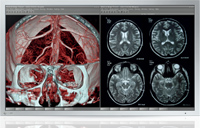
Different Models for Reliable Integration
In the control room there is a need for high quality diagnostic monitors with larger screens and intelligent picture management to watch and control all applications and images used in the operating room from one centralized working place.
For the Operating Room
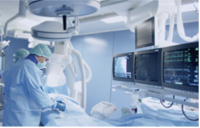
DICOM Compliant Large Monitors
Seamless extension of PACS (Picture Archiving and Communication System) enables the digital distribution of modality image information into the operating room as an alternative to traditional film. Having a large monitor that is compliant with DICOM Part 14 and capable of handling a large volume of information reduces the overall equipment footprint in the operating room while increasing flexibility and efficiency.
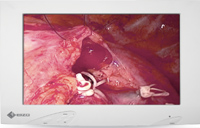
Monitors to match up with Endoscopic Systems
The advances in endoscopic video cameras used in procedures have increased demands placed on monitors deployed with these systems. EIZO monitors offer smooth rendering of the movements and variable color adjustments for easier tissue recognition.

Fulfilling Clean Environment requirements
All devices used in an operating room must fulfill special hygienic requirements. EIZO monitors come with a waterproof glass panel protector for safe and clean integration in the operating room. With their clean lines and smooth surfaces, all monitors allow easy cleaning and disinfection and were designed for appropriate resistance to medical cleaning agents.




